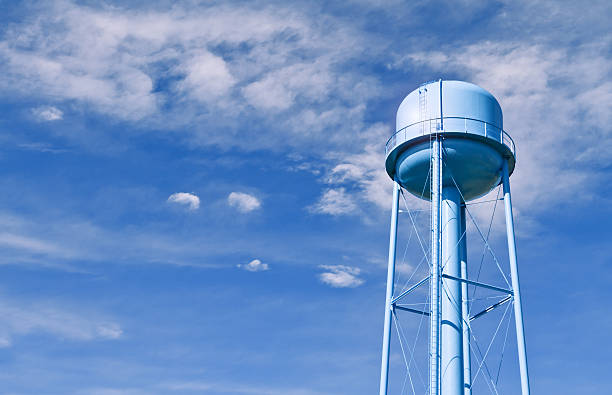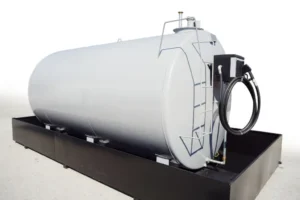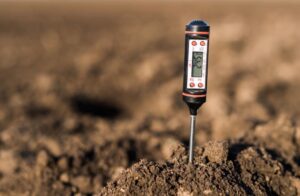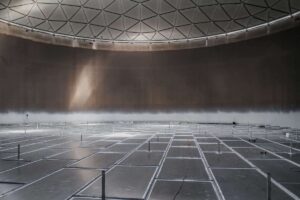You drive by them every day those big metal cylinders looming over gas stations, factories, and industrial sites. Aboveground storage tanks, or ASTs, may not seem like the most attractive structures, but they serve an important purpose. However, just because something is functional doesn’t mean it has to be an eyesore. These days, companies are getting creative with Above ground fuel storage tank design, incorporating architectural details to help the massive tanks blend into their surroundings. The results are ASTs that complement their environment rather than clash with it. 333 Form and function can work together in harmony. In this article, we’ll explore some innovative and eye-catching AST designs that prove industrial equipment can be aesthetically appealing. You’ll see that there’s more to these tanks than meets the eye.
Types of storage tanks: Choosing the Right Aboveground Storage Tank Shape
When choosing an aboveground storage tank for your needs, shape and capacity are two of the most important factors to consider. The shape you select depends on how much volume you require and the space you have available. Here are some oil storage tank types
Round Storage Tanks
Round tanks are the most common and space-efficient shape. Their circular design maximizes capacity for the space. If you have limited room but need high volume, a round tank is probably your best bet. They come in a range of sizes to suit any need.
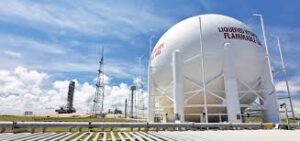
Rectangular Storage Tanks
Rectangular tanks have a boxy shape that can work well when you want to maximize capacity but have space limitations in one direction. Their square corners allow them to fit compactly against walls or in corners. Rectangular tanks may be a good choice if you have an area that is long and narrow.
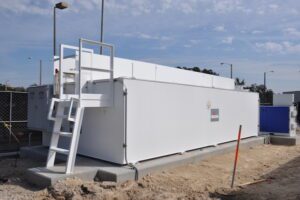
Low-Profile Storage Tanks
For locations where height is an issue, low-profile tanks provide a wide base and low center of gravity with limited height. They have a shallow, rounded shape that extends outwards rather than upwards. Low-profile tanks suit settings where a taller tank would not be practical or permitted.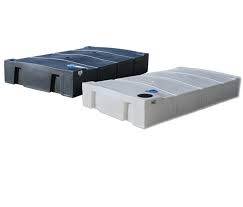
By considering the capacity you need as well as the space you have to work with, you can choose an aboveground storage tank in a shape that is both optimally functional and esthetically suitable for your surroundings. Oil storage tank types you can consider are round ,rectangular, low-profile or another option. Analyzing how form and functionality can meet will help you make the best choice.
Above ground fuel storage tanks Design Challenges
Balancing form and function is an age-old challenge in design. When it comes to industrial structures like aboveground storage tanks, it can seem nearly impossible. These towering cylinders are essential for safely containing liquids and gasses, but they’re not exactly easy on the eyes.
Architects and engineers have come up with some clever ways to soften the visual impact of ASTs. One approach is choosing a tank color that blends into the surrounding landscape. Earthy tones of green, brown and gray help the tank fade into the background. Another trick is breaking up the shape to make it less imposing.
- Adding geometric accents, contours, or recessed panels along the sides of the tank.
- Painting the tank in vertical stripes to make it appear more slender.
- Using the height to an advantage by turning the tank into an eye-catching architectural focal point. A bold or complex paint job transforms the tank into public art.
Of course, aesthetics should never compromise safety or function. The primary purpose of an AST is to securely store hazardous materials, often in industrial areas. Any decorative elements must not interfere with maintenance, inspection, or emergency response procedures. The ideal solution artfully incorporates visual appeal without sacrificing practicality.
When all is said and done, balancing form and function in AST design comes down to understanding the needs of all stakeholders – from plant workers to community members – and finding a solution that addresses both practical and aesthetic concerns. With creativity and compromise, industrial structures can achieve a harmonious fusion of beauty and purpose.
How to Make Aboveground Tanks More Appealing
Aboveground storage tanks don’t have to be eyesores. With some creative architectural and design elements, these oil and gas storage tanks can be made more appealing and blend into their surroundings.
Camouflage and Hide
One approach is to camouflage the tank to hide it in plain sight. Paint the tank in earthy colors that match the surrounding terrain and landscape. This works especially well for tanks in rural or natural settings. You can also plant fast-growing trees, shrubs, and foliage around the base of the tank to obscure it from view. As the plantings mature, they will create a natural barrier.
Embrace and Enhance
Instead of hiding the tank, you can choose to enhance its appearance. Paint the tank in an attractive color that complements the surrounding architecture or structures. Add interesting visual details like textured paint, simulated wood grain, stone, or brick patterns. Top the tank with an architecturally appealing roof, dome, or other structure. The tank then becomes an asset that enhances the overall aesthetic.
Public Art Canvas
Get creative and turn your aboveground storage tank into a work of public art. Have a local artist or art students paint an artistic mural on the tank exterior. You can paint faux windows, landscapes, or city skylines for a trompe-l’oeil effect. Adding sculptural elements, lighting effects, or other mixed media to the tank transforms it into an artistic focal point. This approach embraces the structure and uses it as a canvas for creative expression.
Following these principles, you can make an aboveground storage tank blend in, accentuate its surroundings, or become a notable piece of community art. With some imagination, what is utilitarian infrastructure doesn’t have to lack visual appeal or detract from the landscape. An eyesore can become an eye-catching asset.
Case Studies of Innovative Above ground fuel storage tank Design
When designing aboveground storage tanks (ASTs), it’s important to consider both function and appearance. Some companies have found innovative ways to blend these priorities, creating ASTs that serve their purpose while also enhancing the surrounding landscape.
The Wave Tank in Chile was designed by Mario Pani architects to store 5 million liters of water. However, its undulating concrete shell also references the waves and shoreline of the nearby Pacific Ocean. The rippled effect creates an eye-catching silhouette visible from a distance. Up close, built-in benches invite passersby to sit and enjoy the scenery.
The Grain Silo in Copenhagen
The Grain Silo in Copenhagen, Denmark was originally used to store grain but fell into disuse. Architects from BIG (Bjarke Ingels Group) transformed the historic silo into an urban oasis with apartments, offices, restaurants, and an art gallery. The redesign preserved the original silo infrastructure but added colorful exterior lighting, greenery, and open-air terraces. The end result is an inspiring example of adaptive reuse that celebrates both the history and future of the structure.
The Water Tower in New York
In upstate New York, the Hurleyville Arts Center redeveloped an abandoned water tower into a space for art exhibits, live music, and community events. The 40-foot tower now features a winding staircase leading to an observation deck with panoramic views of the Catskill Mountains. New windows and an open-air top level were added while maintaining the integrity of the original masonry base. Like the grain silo, this innovative transformation gave new life and purpose to a historic industrial structure.
By thinking outside the box, architects and designers have found ways to make ASTs and other utilitarian buildings more aesthetically appealing and integrated with their surroundings. When functionality and beauty are combined, the results can be inspiring. These case studies demonstrate how a little creativity can go a long way in balancing purpose and place.
How to Balance Form and Function in Aboveground Storage Tank Design
When designing an aboveground storage tank, balancing aesthetics and functionality is key. You want a tank that blends into its surroundings and serves its purpose well. Here are some tips to find harmony between form and function in your tank design:
Choose a tank style that complements your site.
Select a tank style that matches your facility’s architecture and the surrounding environment. Vertical tanks with conical roofs work well in industrial settings. Horizontal tanks can mirror the long, low profiles of some buildings. For rural areas, consider a tank with an agrarian shape, like a silo.
Use neutral, earthy colors.
Paint your tank in colors that blend into the background, like grays, greens, and browns. These natural, muted shades help tanks recede visually. Bright colors, on the other hand, draw attention and can make tanks appear more imposing.
Disguise tank infrastructure.
Hide pumps, pipes, ladders, and other equipment to make your tank less conspicuous. Bury pipes underground or conceal them behind walls. Install ladders and walkways inside the tank or mount them flush with the tank exterior. Group pumps and valves together and house them in a utility building.
Provide screening and landscaping.
Strategically placed screening and landscaping are simple ways to obscure tanks from view and soften their profile. Plant trees, shrubs, and tall grasses around the tank perimeter. For a natural look, choose plant species native to your area. You can also install privacy fencing, trellises, and perimeter walls to block tanks from sight.
Consider an architectural tank wrap.
If disguising a tank isn’t possible or ideal for your needs, an architectural wrap can give it an attractive facade. Wraps are flexible graphic sheeting that slips over tank exteriors. They come in a variety of patterns, textures, and images that can transform the look of a tank to match nearby buildings or replicate materials like stone, brick, and wood. Architectural wraps provide an easy cosmetic solution when balancing esthetics and functionality in tank design.
Conclusion
So there you have it – an overview of some innovative approaches to disguising those unappealing yet necessary aboveground storage tanks. Whether it’s making them look like something else entirely or incorporating them into the landscape, architects and designers have come up with clever ways to balance form and function. The next time you drive by one of those big round tanks in your neighborhood, you may just do a double take. Those boring gray cylinders could be hidden in plain sight, camouflaged as a piece of public art or a quirky roadside attraction. Necessity is the mother of invention, and in this case, it has inspired some truly creative solutions. Who knew an industrial structure could look so interesting? Now you’ll be seeing aboveground storage tanks in a whole new light.

